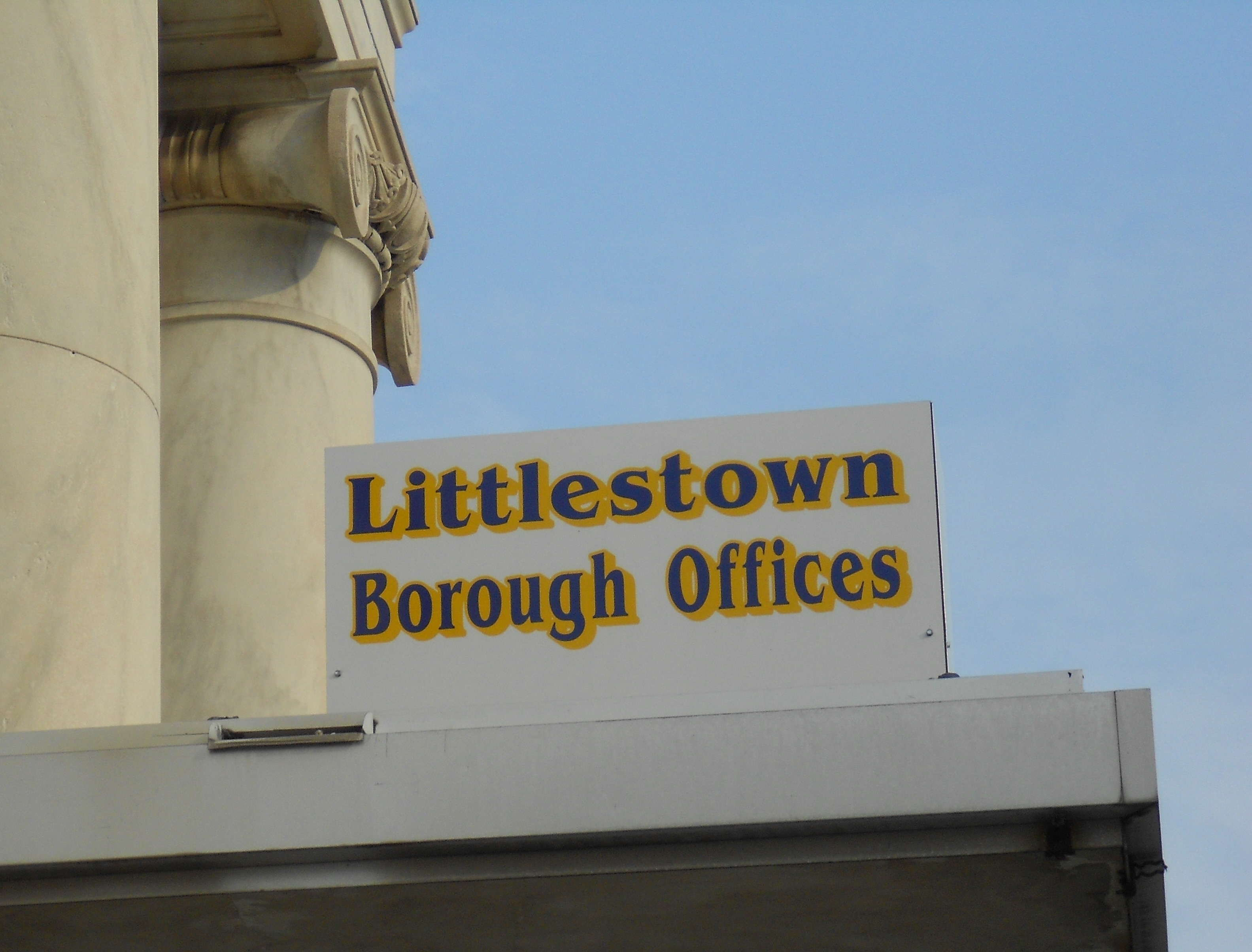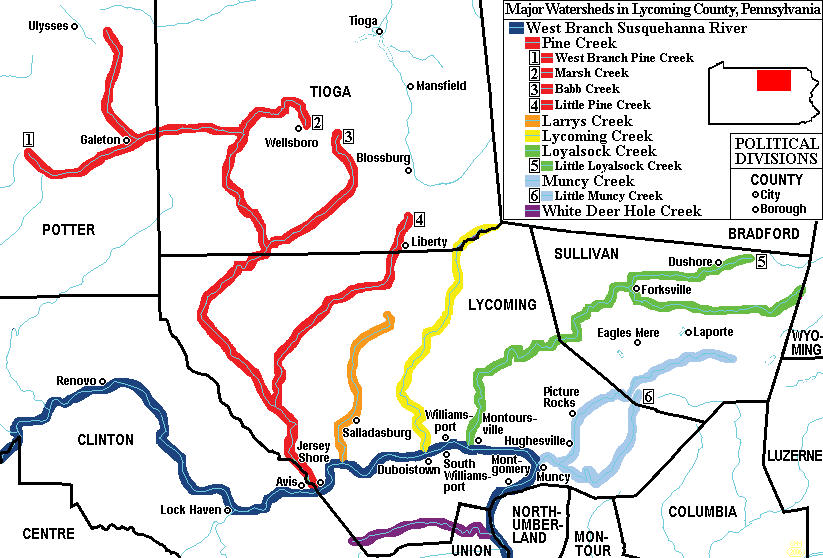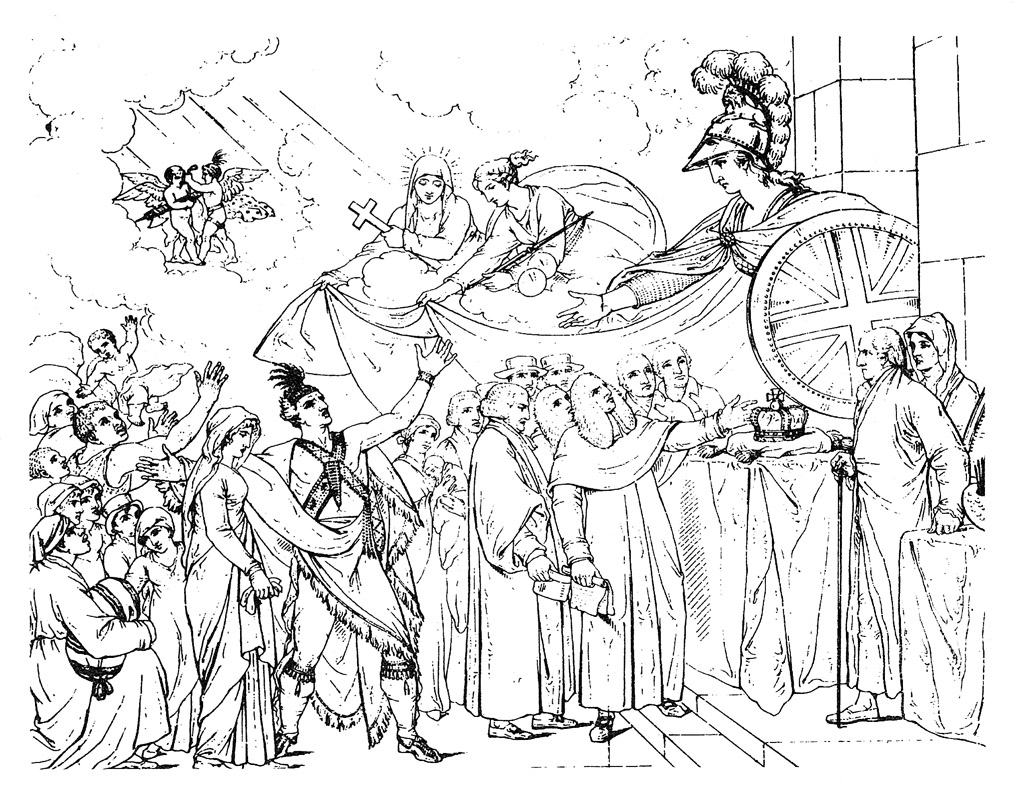|
Jersey Shore, PA (3873481401)
Jersey Shore is a borough in Lycoming County, Pennsylvania, United States. It is on the West Branch Susquehanna River, west by south of Williamsport. It is part of the Williamsport, Pennsylvania Metropolitan Statistical Area. In the past, Jersey Shore held farms, railroad shops, cigar factories, a foundry, and a large silk mill. The population was 4,158 at the 2020 census. History Jersey Shore was incorporated as a borough on March 15, 1826. The history of Jersey Shore begins about 50 years before it was incorporated and on the opposite bank of the West Branch Susquehanna River in what is now Nippenose Township. Colonel John Henry Antes arrived in 1772 and established a homestead along the banks of Antes Creek. Antes also built a gristmill and his fortified home, Fort Antes, provided a safe haven for the early settlers against raids conducted by Loyalist and Indian forces during the American Revolution. Settlers who had sought refuge at Fort Antes and had returned to th ... [...More Info...] [...Related Items...] OR: [Wikipedia] [Google] [Baidu] |
Borough (Pennsylvania)
In the Commonwealth (U.S. state), United States Commonwealth of Pennsylvania, a borough (sometimes spelled boro) is a self-governing Municipality, municipal entity, equivalent to a town in most jurisdictions, usually smaller than a city, but with a similar population density in its residential areas. Sometimes thought of as "junior cities", boroughs generally have fewer powers and responsibilities than full-fledged cities. Description All municipalities in Pennsylvania are classified as either Local government in Pennsylvania#City, cities, boroughs, or township (Pennsylvania), townships. The only exception is the town of Bloomsburg, Pennsylvania, Bloomsburg, recognized by the state government as the only incorporated town in Pennsylvania. Boroughs tend to have more developed business districts and concentrations of public and commercial office buildings, including courthouses. Boroughs are larger, less spacious, and more developed than the relatively rural townships, which oft ... [...More Info...] [...Related Items...] OR: [Wikipedia] [Google] [Baidu] |
Sullivan's Expedition
The 1779 Sullivan Expedition (also known as the Sullivan-Clinton Expedition, the Sullivan Campaign, and the Sullivan-Clinton Campaign) was a United States military campaign under the command of General John Sullivan during the American Revolutionary War, lasting from June to October 1779, against the four British-allied nations of the Iroquois (also known as the Haudenosaunee). The campaign was ordered by George Washington in response to Iroquois and Loyalist attacks on the Wyoming Valley, and Cherry Valley. The campaign had the aim of "the total destruction and devastation of their settlements." Four Continental Army brigades carried out a scorched-earth campaign in the territory of the Iroquois Confederacy in what is now central New York. The expedition was largely successful, with 40 Iroquois villages razed and their crops and food stores destroyed. The campaign drove just over 5,000 Iroquois to Fort Niagara seeking British protection, and depopulated the area for post-war s ... [...More Info...] [...Related Items...] OR: [Wikipedia] [Google] [Baidu] |
Province Of Pennsylvania
The Province of Pennsylvania, also known as the Pennsylvania Colony, was a British North American colony founded by William Penn, who received the land through a grant from Charles II of England in 1681. The name Pennsylvania was derived from Latin, meaning "Penn's Woods", a reference to William Penn's father Admiral Sir William Penn. History European settlement The Province of Pennsylvania was one of two major Restoration colonies in colonial-era British America. A plan for government of the colony of Pennsylvania was heavily influenced by the ideas and utopian aspirations of English political scientist James Harrington. The proprietary colony's charter remained in the Penn family until the Penns were ousted in 1776 during the American Revolutionary War, and the Commonwealth of Pennsylvania was established as one of the original thirteen states. In June 1776, the Lower counties on the Delaware, a separate colony within the Province of Pennsylvania, broke away from ... [...More Info...] [...Related Items...] OR: [Wikipedia] [Google] [Baidu] |
Squatters
Squatting is the action of occupying an abandoned or unoccupied area of land or a building (usually residential) that the squatter does not own, rent or otherwise have lawful permission to use. The United Nations estimated in 2003 that there were one billion slum residents and squatters globally. Squatting is practiced worldwide, typically when people find empty buildings or land to occupy for housing. In developing countries and least developed countries, shanty towns often begin as squatted settlements. In African cities such as Lagos, much of the population lives in slums. There are pavement dwellers in India and in Hong Kong as well as rooftop slums. Informal settlements in Latin America are known by names such as villa miseria (Argentina), pueblos jóvenes (Peru) and asentamientos irregulares (Guatemala, Uruguay). In Brazil, there are favelas in the major cities and rural land-based movements. In industrialized countries, there are often residential squats and also ... [...More Info...] [...Related Items...] OR: [Wikipedia] [Google] [Baidu] |
Fair Play Men
The Fair Play Men were illegal settlers (squatters) who established their own system of self-rule from 1773 to 1785 in the West Branch Susquehanna River valley of Pennsylvania in what is now the United States. Because they settled in territory claimed by Native Americans, they had no recourse to the Pennsylvania colonial government. Accordingly they established what was known as the Fair Play System, with three elected commissioners who ruled on land claims and other issues for the group. In a remarkable coincidence, the Fair Play Men made their own declaration of independence from Britain on July 4, 1776 beneath the "Tiadaghton Elm" on the banks of Pine Creek. The 1768 Treaty of Fort Stanwix The British colonial government purchased land from the Iroquois in the Treaty of Fort Stanwix of 1768, opening new lands in Pennsylvania and New York for settlement, including what is now Lycoming County, Pennsylvania. Lycoming County is about 100 mi (160 km) northwest of Philadelp ... [...More Info...] [...Related Items...] OR: [Wikipedia] [Google] [Baidu] |
Big Runaway
The Big Runaway was a mass evacuation in June and July 1778 of White settlers from the frontier regions of North Central Pennsylvania during the American Revolutionary War. It was precipitated by a series of raids against local settlements on the northern and western branches of the Susquehanna River by Loyalist troops and British-allied Indians, which prompted Patriot militia commanders to order the evacuation. Most of the settlers relocated to Fort Augusta near modern-day Sunbury, Pennsylvania at the confluence of the northern and western branches of the Susquehanna River, while their abandoned houses and farms were all burnt as part of a scorched earth policy. Some settlers returned soon after, but the Loyalist and Indians renewed their raids in the following year, leading to a second evacuation known as The Little Runaway. These attacks on the Pennsylvania frontier led to retaliatory raids by the Continental Army against the Native Americans, including Sullivan's Expediti ... [...More Info...] [...Related Items...] OR: [Wikipedia] [Google] [Baidu] |
Cattle
Cattle (''Bos taurus'') are large, domesticated, bovid ungulates widely kept as livestock. They are prominent modern members of the subfamily Bovinae and the most widespread species of the genus '' Bos''. Mature female cattle are called cows and mature male cattle are bulls. Young female cattle are called heifers, young male cattle are oxen or bullocks, and castrated male cattle are known as steers. Cattle are commonly raised for meat, for dairy products, and for leather. As draft animals, they pull carts and farm implements. Cattle are considered sacred animals within Hinduism, and it is illegal to kill them in some Indian states. Small breeds such as the miniature Zebu are kept as pets. Taurine cattle are widely distributed across Europe and temperate areas of Asia, the Americas, and Australia. Zebus are found mainly in India and tropical areas of Asia, America, and Australia. Sanga cattle are found primarily in sub-Saharan Africa. These types, sometime ... [...More Info...] [...Related Items...] OR: [Wikipedia] [Google] [Baidu] |
American Revolution
The American Revolution (1765–1783) was a colonial rebellion and war of independence in which the Thirteen Colonies broke from British America, British rule to form the United States of America. The revolution culminated in the American Revolutionary War, which was launched on April 19, 1775, in the Battles of Lexington and Concord. Leaders of the American Revolution were Founding Fathers of the United States, colonial separatist leaders who, as British subjects, initially Olive Branch Petition, sought incremental levels of autonomy but came to embrace the cause of full independence and the necessity of prevailing in the Revolutionary War to obtain it. The Second Continental Congress, which represented the colonies and convened in present-day Independence Hall in Philadelphia, formed the Continental Army and appointed George Washington as its commander-in-chief in June 1775, and unanimously adopted the United States Declaration of Independence, Declaration of Independence ... [...More Info...] [...Related Items...] OR: [Wikipedia] [Google] [Baidu] |
Loyalist (American Revolution)
Loyalists were refugee colonists from Thirteen Colonies, thirteen of the 20 British American colonies who remained loyal to the British Crown, British crown during the American Revolution, often referred to as Tories, Royalists, or King's Men at the time. They were opposed by the Patriot (American Revolution), Patriots or Whigs, who supported the revolution and considered them "persons inimical to the liberties of America." Prominent Loyalists repeatedly assured the Government of the United Kingdom, British government that many thousands of them would spring to arms and fight for the Crown. The British government acted in expectation of that, especially during the Southern theater of the American Revolutionary War, Southern campaigns of 1780 and 1781. Britain was able to effectively protect the people only in areas where they had military control, thus the number of military Loyalists was significantly lower than what had been expected. Loyalists were often under suspicion of t ... [...More Info...] [...Related Items...] OR: [Wikipedia] [Google] [Baidu] |
Fort Antes
Fort Antes was a stockade surrounding the home of Colonel John Henry Antes, built ''circa'' 1778 in American Revolution, Revolutionary Pennsylvania in the United States. The fort was built under the direction of Colonel Antes, who was a member of the Associators, Pennsylvania militia. It was on the east side of Antes Creek, overlooking and on the river, left bank of the West Branch Susquehanna River on a plateau in Nippenose Township, Pennsylvania, Nippenose Township south of modern day Jersey Shore, Pennsylvania, Jersey Shore in western Lycoming County, Pennsylvania, Lycoming County. The local militia held the fort for a short period of time until it was ordered to abandon Fort Antes during the Big Runaway by Colonel Samuel Hunter. Despite being abandoned and attempts by the attacking British forces to burn it down, Fort Antes was one of only two structures in the valley to survive the Big Runaway. John Henry Antes John Henry Antes settled along the West Branch Susquehanna River ' ... [...More Info...] [...Related Items...] OR: [Wikipedia] [Google] [Baidu] |
Gristmill
A gristmill (also: grist mill, corn mill, flour mill, feed mill or feedmill) grinds cereal grain into flour and Wheat middlings, middlings. The term can refer to either the grinding mechanism or the building that holds it. Grist is grain that has been separated from its chaff in preparation for mill (grinding), grinding. History Early history The Greek geographer Strabo reported in his ''Geography'' that a water-powered grain-mill existed near the palace of king Mithradates VI Eupator at Cabira, Asia Minor, before 71 BC. The early mills had horizontal paddle wheels, an arrangement which later became known as the "Norse wheel", as many were found in Scandinavia. The paddle wheel was attached to a shaft which was, in turn, attached to the centre of the millstone called the "runner stone". The turning force produced by the water on the paddles was transferred directly to the runner stone, causing it to grind against a stationary "Mill machinery#Watermill machinery, bed", a ... [...More Info...] [...Related Items...] OR: [Wikipedia] [Google] [Baidu] |






